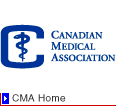
Letters / Correspondance
CJRM 1998;3(2):108
© 1998 Society of Rural Physicians of Canada
Country cardios and Colles' fracture
I always enjoy Country cardiograms. Case 6 (Thompson JM. Biventricular infarction. Can J Rural Med 1997;2[4]:190,200) describes the type of patient who is being referred for primary angioplasty in Calgary emergency departments now. The criteria are cardiogenic shock, contraindications to thrombolytic agents within 12 hours of pain onset, a large myocardial infarction suggested by ST elevation in 4 or more leads and hemodynamic or electrical instability. I had a patient with an anterior acute myocardial infarction who survived 2 hours of cardiopulmonary resuscitation and had the angioplasty during CPR. I'm not convinced that thrombolytic agents did much in Country cardiogram case 6, given the angiography findings. The question is what is best in a rural setting, thrombolytic agents and emergent angiography or just emergent angioplasty? Probably a trial of thrombolytic, as in case 6, is the way to go, given the interhospital transfer distance.I read your excellent Colles' fracture review (Thompson JM, Ukrainetz P. Managing Colles' fracture in rural practice. Can J Rural Med 1998;3[1]:20-5). I'd like to point out a paper on "mini-Bier" block (Farrell RG, Swanson SL, Walter JR. Safe and effective IV regional anesthesia for use in the Emergency Department. Ann Emerg Med 1995;14[4]:288-92). I use this protocol almost exclusively for the Colles' fractures that I reduce, as I think it gives better analgesia than hematoma block. With the minidose, the risks of side effect seem to be low, and certainly I've never had a problem.
David Cebuliak, MD, CCFP(EM)
Bragg Creek, Alta.
The author replies:
The coronary circulation diagram that we published in Country cardiograms case 6 misleadingly shows 100% obstructions in both the right coronary artery (RCA) and the left anterior descending (LAD) coronary artery. That was based on a computer printout from the angiography computer, and although it was faithful to the paper trail it did not represent the true nature of the fixed lesions in this patient. According to the angiographer's dictated note accompanying the diagram, there was 50% fixed stenosis in the proximal RCA and 100% stenosis in the LAD, and I should have amended the diagram accordingly. The thrombolytic therapy he received in the rural hospital removed the clot from the RCA, restoring blood flow to his preinfarction collateral circulation. The point about the role of rapid transport and emergent angioplasty in this kind of patient is well taken. Primary angioplasty should be considered when time and distance permit. In this case the cardiologist, during a phone consultation, recommended that thrombolysis be initiated before transport. At a 1-year follow-up this patient was symptom-free and had a normal electrocardiogram.The tip on the minidose Bier block is an excellent one. The technique appears to be a very good alternative for the rural physician using anesthesia in forearm procedures such as reduction of a Colles' fracture.
Jim Thompson, MD, CCFP(EM), FCFP
Sundre, Alta.
